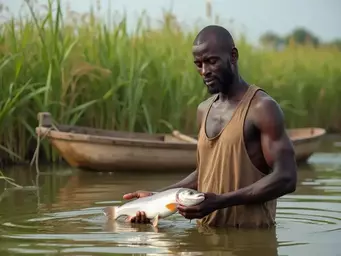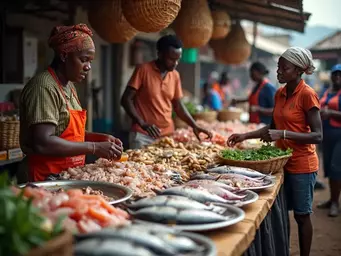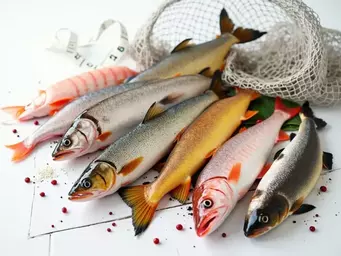Population Growth: Africa's population projected to double by 2050.
Challenges and Solutions for Fish Farming
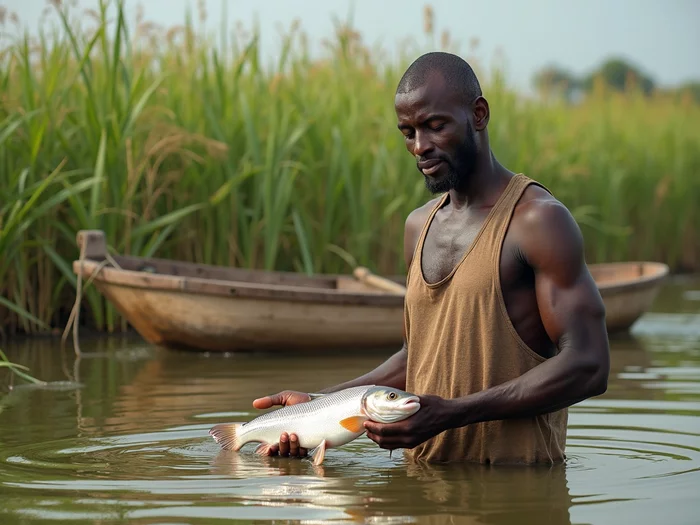
Posted on: 2025-09-19
By: Kwame Adom
The Rise of Fish Farming in Africa: A Deep Dive into Market Dynamics
The fish farming industry in Africa is on the rise, driven by increasing demand and consumer awareness. Are you ready to dive into this thriving sector? Here are the key insights you’ll gain from understanding the dynamics at play.
What You Will Learn
- The demand for fish protein in Africa is rapidly increasing due to population growth, health awareness, and urbanization.
- Key stakeholders in the aquaculture sector include government bodies, fisheries cooperatives, research institutions, and consumers, each playing a vital role.
- Consumer preferences are shifting towards sustainably sourced and locally produced fish, with an increasing demand for diverse fish species.
- Understanding government policies and environmental regulations is crucial for compliance and success in the fish farming business.
- Investment in infrastructure, capacity building, and technology adoption are essential for the future growth of fish farming in Africa.
- Engaging stakeholders through collaborative initiatives and partnerships is key to overcoming challenges in the aquaculture sector.
- Building community support through fisheries cooperatives enhances resource sharing, market access, and knowledge exchange among fish farmers.
Key Drivers and Solutions in African Fish Farming
The visualizations below illustrate the main factors driving demand for fish protein in Africa and the strategic solutions for addressing aquaculture challenges. For more detailed insights into specific markets, explore our guide on Fish Farming in Nigeria: Profits, Challenges & Innovation.
Growing Demand for Fish Protein
Health Awareness: Consumers opting for fish as lean protein.
Urbanization: Rising demand for accessible fresh fish in urban areas.
Roadmap for Success: Key Solutions
Infrastructure Investment: Better facilities for farming, processing, distribution.
Capacity Building: Programs to enhance farmers' skills and production rates.
Sustainable Practices: Integrating aquaculture with agriculture.
Technology Adoption: Utilizing digital tools for efficiency.
Understanding the Landscape of Fish Farming in African Markets
The fish farming sector in Africa is experiencing a remarkable transformation, driven by the increasing demand for fish protein. As we observe the growing interest in sustainable food sources, it’s essential to understand the dynamics that shape our aquaculture landscape. Here at Fish Farming Business, we believe that by equipping ourselves with knowledge, we can navigate these changes and seize the opportunities present in our local markets.
With countries like Nigeria, Ghana, Kenya, and South Africa leading the charge, the potential of aquaculture is immense. This rising demand isn’t just a fleeting trend; it reflects a broader shift toward healthier eating habits and an increased awareness of the nutritional value of fish.
The Growing Demand for Fish Protein in Africa
The demand for fish protein in Africa is skyrocketing! This surge is driven by several factors:
- Population Growth: Africa's population is projected to double by 2050, leading to an increased need for protein-rich food sources.
- Health Awareness: Consumers are becoming more health-conscious, opting for fish as a lean protein option.
- Urbanization: As people move to urban areas, the demand for accessible fresh fish rises.
At Fish Farming Business, we’re excited about these trends as they present unique opportunities for aspiring fish farmers. By capitalizing on this demand, you can position your venture for success in an evolving market. Discover more about the fish farming business in Ghana.
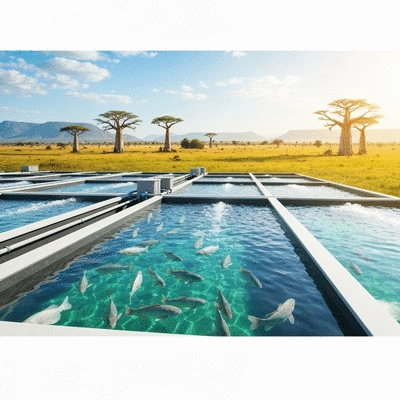
Key Players and Stakeholders in the Aquaculture Sector
Understanding who the key players are in the aquaculture sector is crucial to successfully navigating this landscape. Here are some of the major stakeholders:
- Government Bodies: They set regulations that impact the industry.
- Fisheries Cooperatives: These groups provide necessary support and resources for fish farmers.
- Research Institutions: They drive innovation and best practices in aquaculture.
- Consumers: Their preferences directly influence production trends.
Connecting with these key players can open doors and provide valuable resources as you establish or expand your fish farming initiative.
Market Demand Trends: How Consumer Preferences Shape Aquaculture
Consumer preferences are continually evolving, and it’s vital to stay attuned to these changes. Some trending preferences include:
- Sustainable Sourcing: More consumers are looking for fish sourced from environmentally friendly practices.
- Locally Sourced Products: There's a growing preference for fresh, locally sourced fish over frozen imports.
- Variety of Species: Demand for diverse species like tilapia and catfish is increasing.
Being aware of these trends allows you to tailor your farming practices to meet market needs. It’s all about understanding the consumer and aligning your production strategies accordingly!
Government Policies and Environmental Regulations Impacting Fish Farming
Government policies and environmental regulations play a significant role in shaping the fish farming landscape. Understanding these can help you navigate potential challenges:
- Licensing Requirements: Each country has its own rules that fish farmers must comply with to operate legally.
- Environmental Protections: Regulations designed to protect aquatic ecosystems can impact where and how you farm.
- Subsidies and Support Programs: Some governments provide financial incentives to promote sustainable practices.
By staying informed about these policies, you can better plan your fish farming business for compliance and success. Let’s embrace the regulations that benefit our industry while fostering sustainable practices! For an example of how this plays out in specific regions, consider the regulatory framework for fish farming in Kenya.
Pro Tip
Did you know? Collaborating with local fisheries cooperatives can significantly enhance your fish farming success. By pooling resources and sharing knowledge, you not only reduce costs but also gain access to a broader market and valuable insights that can improve your farming practices.
Frequently Asked Questions About Fish Farming in Africa
Why is fish farming growing rapidly in Africa?
Fish farming in Africa is experiencing rapid growth due to increasing population, rising health awareness leading consumers to choose fish as a lean protein, and urbanization, which increases the demand for accessible fresh fish in urban centers.
Who are the key stakeholders in the African aquaculture sector?
The key stakeholders include government bodies (setting regulations), fisheries cooperatives (providing farmer support), research institutions (driving innovation), and consumers (influencing market trends through their preferences).
What are the current consumer preferences shaping the aquaculture market?
Consumers are increasingly preferring sustainably sourced fish, locally produced fresh fish over imports, and a greater variety of fish species like tilapia and catfish.
How do government policies and environmental regulations affect fish farming?
Government policies include licensing requirements for legal operation, environmental protections to safeguard aquatic ecosystems, and subsidies or support programs to promote sustainable practices. Adhering to these is crucial for compliance and success.
What is the roadmap for the future success of fish farming in Africa?
The roadmap for success involves investment in infrastructure (farming, processing, distribution facilities), capacity building (enhancing farmers' skills), promoting sustainable practices (integrating aquaculture with agriculture), and adopting technology (utilizing digital tools for efficiency).
Summarizing Key Insights on Fish Farming Challenges and Solutions
As we examine the landscape of fish farming in Africa, it becomes clear that the sector faces both significant challenges and promising solutions. By addressing the hurdles, we can pave a way towards a thriving aquaculture industry that benefits not only farmers but also the communities they serve. Let’s break down some of the main challenges and the innovative solutions available to overcome them.

The Future of Fish Farming in Africa: A Roadmap for Success
Looking ahead, the future of fish farming in Africa is bright, but it requires a concerted effort from all stakeholders. Key focus areas include:
- Investment in Infrastructure: Developing better facilities for fish farming, processing, and distribution is crucial.
- Capacity Building: Programs aimed at enhancing the skills of farmers can significantly improve production rates.
- Sustainable Practices: Integrating aquaculture with agriculture can promote environmental sustainability.
- Technology Adoption: Utilizing digital tools can streamline operations and improve efficiency.
By focusing on these areas, we can create a roadmap that not only addresses the current challenges but also positions fish farming as a key player in Africa's economy.
Call to Action: Engaging Stakeholders in Addressing Aquaculture Challenges
To truly transform the aquaculture sector, it’s essential for all stakeholders—governments, farmers, NGOs, and the private sector—to work together. Here are some actionable steps we can take:
- Collaborative Workshops: Hosting workshops that bring together fish farmers to share experiences and best practices.
- Creating Partnerships: Forming partnerships between smallholder farmers and larger enterprises to enhance market access.
- Policy Advocacy: Advocating for policies that support fish farming, such as subsidies and grants.
- Awareness Campaigns: Initiating campaigns to promote the benefits of local fish consumption and sustainable practices.
Engaging in these initiatives fosters a sense of community and drives collective action towards resolving our shared challenges.
Building Community Support and Fisheries Cooperatives for Sustainable Growth
Community support is vital for the sustainability of fish farming practices. By forming fisheries cooperatives, farmers can:
- Share Resources: Pooling resources allows for cost-effective purchasing of feed and equipment.
- Enhance Market Access: Working together can improve bargaining power when selling fish.
- Facilitate Knowledge Sharing: Members can learn from each other's successes and challenges, fostering a culture of collaboration.
- Promote Sustainable Practices: Cooperatives can champion sustainable fish farming practices that benefit the environment.
By nurturing community ties and forming cooperatives, we create a resilient network that can adapt to the evolving demands of the aquaculture industry. For more information on how to form and manage these groups, read our guide on starting a fish farming business in Uganda.
Recap of Key Points
Here is a quick recap of the important points discussed in the article:
- Growing Demand: The demand for fish protein in Africa is increasing due to population growth, health awareness, and urbanization.
- Stakeholders: Key players in the aquaculture sector include government bodies, fisheries cooperatives, research institutions, and consumers.
- Market Trends: Consumers prefer sustainable sourcing, locally sourced products, and a variety of fish species.
- Regulatory Awareness: Understanding government policies and environmental regulations is crucial for compliance and success.
- Future Focus: Investment in infrastructure, capacity building, sustainable practices, and technology adoption are essential for the future of fish farming in Africa.
 The future of aquaculture in Africa is brimming with opportunities, driven by innovation and sustain
The future of aquaculture in Africa is brimming with opportunities, driven by innovation and sustain
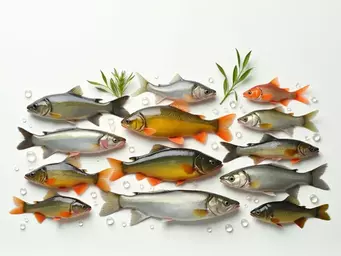 The increasing demand for fish protein in Africa is creating a wealth of opportunities for aspiring
The increasing demand for fish protein in Africa is creating a wealth of opportunities for aspiring
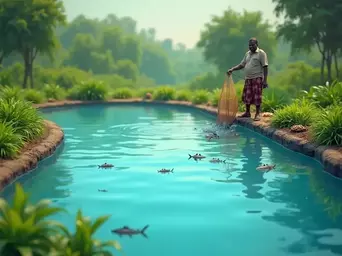 As the demand for fish continues to rise, Ghana's aquaculture sector presents a wealth of opportunit
As the demand for fish continues to rise, Ghana's aquaculture sector presents a wealth of opportunit


